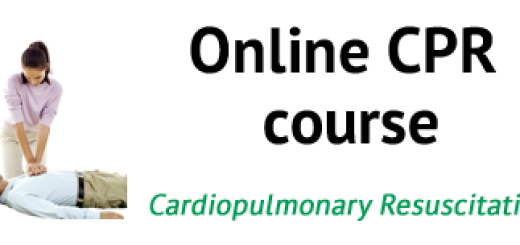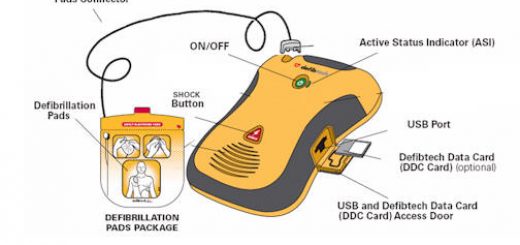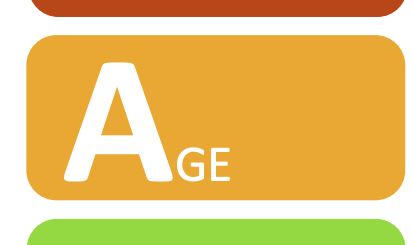How to Use a Digital Blood Pressure Monitor
Measuring your blood pressure enables you to understand if you have low or high blood pressure. High blood pressure, or hypertension, can often lead to a stroke, heart attack, or other health issues. Therefore, monitoring it becomes imperative.
While going to the hospital is one way to monitor your blood pressure, it is only feasible sometimes. Therefore, a digital blood pressure monitor is very useful because you can use it at home.
Whether you’re using this device to measure your own blood pressure or helping someone else get a reading, there are numerous benefits of having a digital blood pressure monitor at home.
In this article, we will discuss how to use a digital blood pressure monitor, how to understand blood pressure readings, how to lower your blood pressure at home, and more.
Using a Digital Blood Pressure Monitor
The exact method of use will depend on the brand of blood pressure monitor. As a general guide, the following steps may be required:
- Make sure the machine has functioning batteries
- Insert the air tube from the cuff into the air jack (if present)
- Switch the button to ON. The symbols on the display light up for a few seconds to check the display. Then all the symbols go out and the air release symbol starts to flash. When the machine has finished its self-test the heart symbol indicates the machine is ready
- Wrap the cuff around the bare arm so that the centre of the bladder is positioned 2-3cms above the elbow joint on the inside of the arm
- Close the cuff with the fabric fastener
- If possible lay the arm out with the palm of the hand facing upwards and the cuff at approximately heart level
- Press the start button. When a target value is reached, air is released and the value in the display counts downwards. As soon as the machine detects the pulse the heart symbol flashes and a buzzer sounds
- When the machine no longer detects the pulse and whilst the cuff pressure is dropping the systolic and diastolic blood pressures are displayed
- The pressure drop symbol appears to announce the end of the measurement
- When all the air has been released the heart symbol appears in the display and the pulse and blood pressure are displayed alternately for about 5 minutes
- If the machine has a memory button, after each measurement the result is automatically entered in the memory and the preceding measurement is erased. If you want to call up the last reading hold down the memory button in order to display it.
- Switch off the machine. If you forget to do so the machine will switch itself off after 5 minutes
If an error occurs during measurement the letter E or EE is displayed. This may occur because:
- There was too much movement of the arm for a reading to be taken – the casualty should keep as still as possible
- The cuff was not fitted correctly – remove and replace
- Clothing constricted the blood flow – remove or cut the clothing
- There was still air in the cuff when the machine switched on – the machine may be defective
- The cuff was not inflated sufficiently in comparison to the expected blood pressure – repeat with an increased expected pressure
Best Digital Blood Pressure Monitors
How to Get an Accurate Blood Pressure Reading
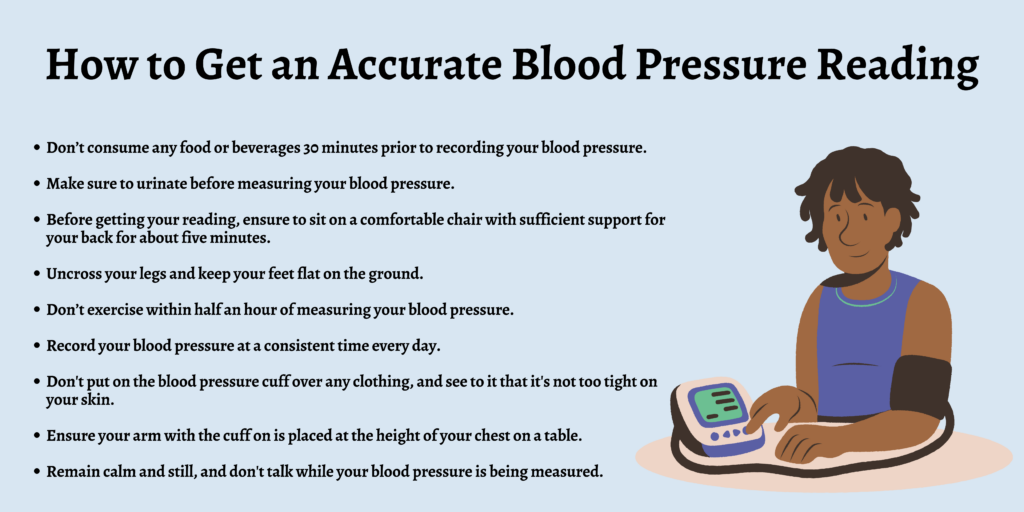
There are a few things to remember while measuring your blood pressure to get an accurate reading. Just keep the following tips in mind:
- Don’t consume any food or beverages 30 minutes prior to recording your blood pressure.
- Make sure to urinate before measuring your blood pressure.
- Before getting your reading, ensure to sit on a comfortable chair with sufficient support for your back for about five minutes.
- Uncross your legs and keep your feet flat on the ground.
- Don’t exercise within half an hour of measuring your blood pressure.
- Record your blood pressure at a consistent time every day.
- Don’t put on the blood pressure cuff over any clothing, and see to it that it’s not too tight on your skin.
- Ensure your arm with the cuff on is placed at the height of your chest on a table.
- Remain calm and still, and don’t talk while your blood pressure is being measured.
Understanding Blood Pressure Readings
Blood pressure readings are displayed as two numbers in mmHg or millimeters of mercury.
The first number you see is the systolic pressure, which refers to the pressure in a person’s blood vessels as their heart beats, and the second number is the diastolic pressure referring to the pressure when one’s heart is resting between beats.
Therefore, if your blood pressure reading is ‘120/80mmHg’, it means that your systolic blood pressure is 120mmHg and your diastolic blood pressure is 80mmHg, and that’s considered as normal blood pressure.
A low blood pressure reading would be 90/60mmHg or lower, and a high blood pressure reading would be 140/90mmHg or anything higher than that.
How to Lower Your Blood Pressure at Home
If your blood pressure is high, there are certain changes you can implement and precautions you can take to bring your blood pressure down to normal levels. Listed below are some things to do to lower your blood pressure at home:
Exercise Regularly
Exercising on a regular basis is one of the best ways to lower your blood pressure. Getting about 150 minutes of exercise every week aids in improving a person’s heart health and lowering their blood pressure.
You can choose any physical activity you enjoy, whether walking, jogging, biking, etc. Even taking the stairs and indulging in household chores can prove to be a good way to give your body some much-needed exercise.
Reduce Salt Intake
Higher salt intake causes a person’s blood pressure to rise. Therefore, reducing one’s salt intake becomes crucial to bringing their blood pressure to a normal level. Add more fruits and vegetables, whole grains, low-fat dairy, beans, and foods with low sodium levels in your diet.
Stay away from prepackaged and processed foods such as chips, pizza, and canned food items, and don’t add extra salt to your food.
Lower Alcohol Intake
Monitoring and lowering your alcohol intake is imperative to keep your blood pressure in check since alcoholic drinks contain high amounts of sugar and calories. These cause weight gain and increase a person’s body fat, contributing to their high blood pressure.
Research suggests that while women should keep their alcohol consumption to one drink a day, men should limit it to two drinks a day in order to maintain normal blood pressure.
Also, it’s crucial to remember that alcohol lowers the effectiveness of a person’s medicines to control their blood pressure.
Include More Potassium in Your Diet
Potassium works wonderfully in reducing the effects of sodium on the human body. It also aids in regulating a person’s heart rate.
The food items to include in your diet to consume a substantial amount of potassium are:
- Beans
- Nuts and seeds
- Green leafy vegetables
- Bananas and oranges
- Tomatoes and avocados
- Tuna and salmon
Reduce Stress Levels
We all experience stress on an everyday basis for multiple reasons, be it something related to work or an incident that takes place at home. Chronic stress, however, can lead to long-term health problems such as stroke and heart disease.
Therefore, reducing your stress levels becomes very important. This also includes changing your habits if your coping mechanisms with regard to stress entail smoking, drinking alcohol, or binge eating.
Attempt to deal with your stress in more creative and positive ways. You can try yoga, journalling, practicing gratitude, and actively avoiding anything that triggers your stress and anxiety.
Avoid Smoking
Smoking increases your heart rate and blood pressure. Long-term effects of smoking include narrowed arteries, inflammation, and damaged blood vessels. Even secondhand smoke can affect a human being’s system negatively. Therefore, avoiding smoking is vital to control your blood pressure.
Cut Back on Caffeine
Although caffeine’s effects on a person’s blood pressure are temporary, you might still want to cut back on your caffeine intake.
Some people are more sensitive to caffeine than others and should particularly avoid consuming numerous cups of coffee in a day. One can go for a decaffeinated beverage instead.
Consume Dark Chocolate
Dark chocolate can lower your blood pressure, with the condition being that it contains somewhere between 60 to 70% cacao. Having about two squares of dark chocolate every day can lower the risk of heart disease since it aids in dealing with inflammation and high blood pressure.
Best Position to Measure Blood Pressure
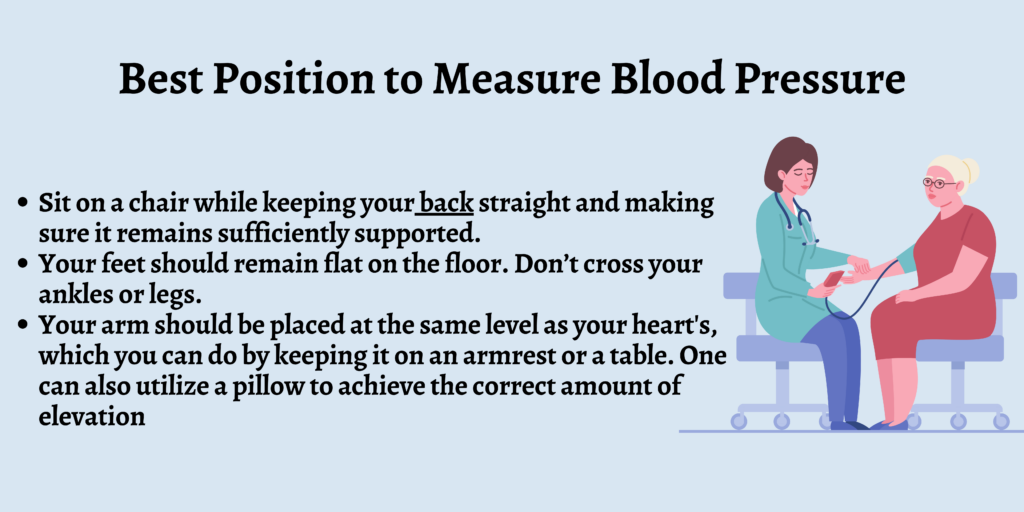
Always make sure to sit down while measuring your blood pressure. Listed below are some points to keep in mind during this time:
- Sit on a chair while keeping your back straight and making sure it remains sufficiently supported.
- Your feet should remain flat on the floor. Don’t cross your ankles or legs.
- Your arm should be placed at the same level as your heart’s, which you can do by keeping it on an armrest or a table. One can also utilize a pillow to achieve the correct amount of elevation.
Conclusion
Using a digital blood pressure monitor at home has become extremely common these days. Many people resort to it in order to effectively manage or treat a health condition.
By using it, you can inform your doctor about your daily blood pressure readings so they can know how much it changes on a regular basis. In case a person consumes medicines to keep their blood pressure in check, a digital blood pressure monitor can signify if the medications are working or not.
FAQs
1. Why should I use a digital blood pressure monitor?
A digital blood pressure monitor helps keep track of your blood pressure regularly so that you convey this information to your doctor. It’s especially helpful for people dealing with certain health conditions, such as hypertension.
2. How can I lower my blood pressure at home?
Blood pressure can be lowered at home by avoiding alcohol and caffeine, lowering salt intake, eating more potassium-rich food items, consuming dark chocolate, and reducing stress levels.
3. What is the best position to measure blood pressure?
While measuring your blood pressure, keep your back straight and supported. Remember not to cross your legs and keep your feet flat on the floor.
4. What to remember to get an accurate blood pressure reading?
In order to get an accurate blood pressure reading, make sure to not eat or drink anything 30 minutes before recording the reading. Remain calm, make sure your back receives proper support, and ensure the cuff isn’t placed over your clothes.

